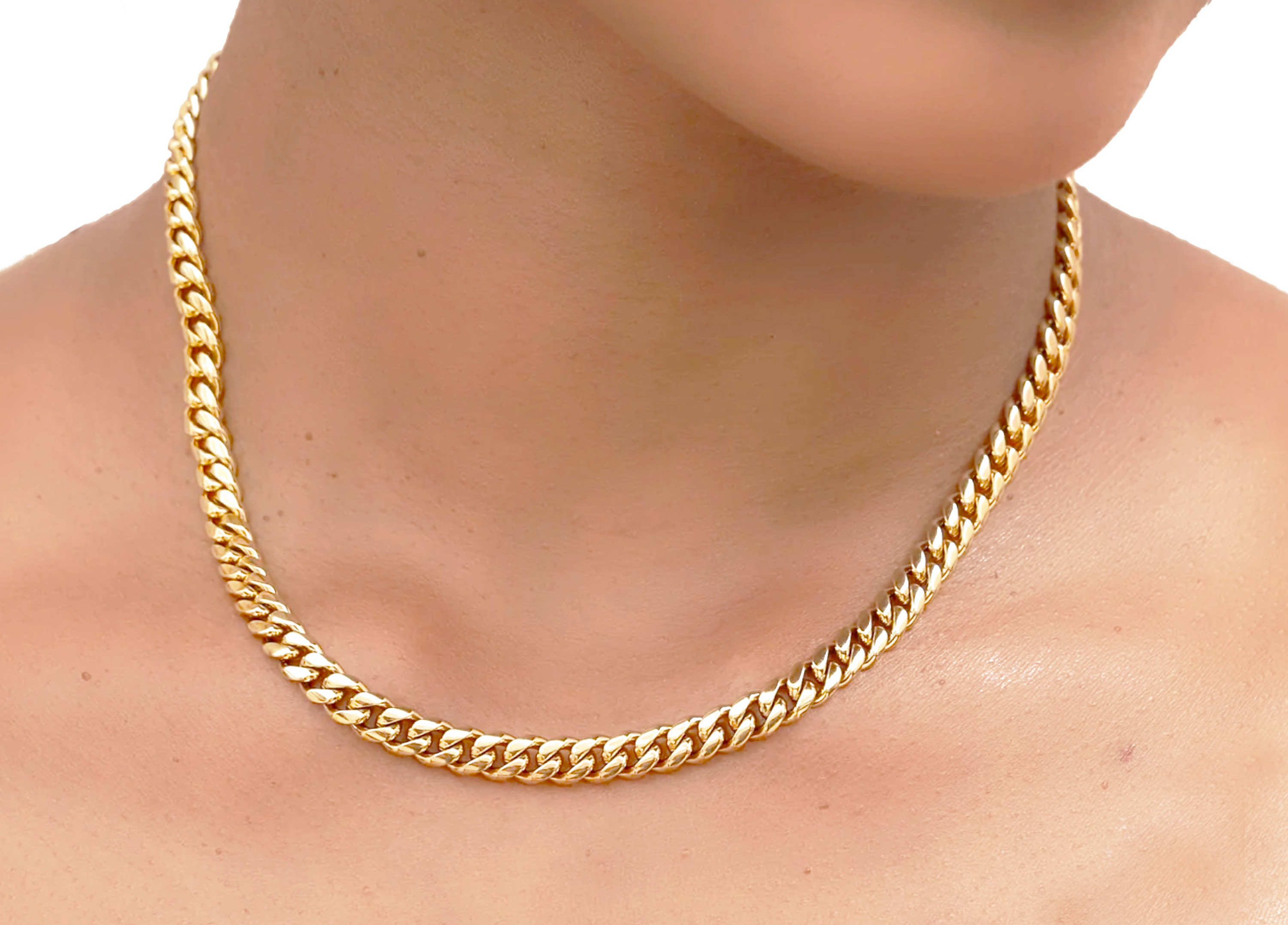The History and The Importance of Gold Curb Chains
Posted by Avi on Jan 29th 2023
Gold curb chains, also known as Cuban link chains, have a long and illustrious history that can be traced back to ancient civilizations. These chains are distinguished by interlocking flattened and twisted links that create a "curb" or "wave" effect.
Individual links are created first in the manufacturing process for gold curb chains. Melting gold and pouring it into a mold creates the desired shape and size of the links. After cooling, the links are removed from the mold.
The links are then polished to make them smooth and shiny. This step can be completed by hand or with the assistance of a machine. Following polishing, the links are checked for flaws and any necessary repairs are made.
Gold jewelry has been used since ancient civilizations such as the Egyptians, Greeks, and Romans believed that gold had medicinal and spiritual properties. Gold was also used to make elaborate pieces of jewelry for royalty and the wealthy as a symbol of wealth and status.
Curb chains, in particular, have a long and illustrious history. Gold curb chains were used as a symbol of rank and status by the ancient Romans. Gold curb chains were popular among the wealthy in the nineteenth century as a symbol of their wealth and status. They were frequently worn as a necklace or pocket watch chain.
Gold curb chains remain popular as a symbol of wealth and style today. They are frequently worn as necklaces or bracelets, and they come in a variety of sizes and styles to suit different tastes. Gold curb chains are also popular in the hip-hop and rap communities, where they are frequently worn as a status symbol.
Gold curb chains have practical applications in addition to their decorative value. They can be used to keep valuable items like keys or pendants safe. They can also be used as a clothing or bag fastener.
The value of gold curb chains lies in their adaptability and long-lasting appeal. They are classic accessories that can be dressed up or down, as well as a symbol of wealth and success that will never go out of style. A gold curb chain is an excellent choice for a statement piece or a practical accessory. The completed links are assembled into the desired length and pattern to form the final curb chain. The chain can be made in a variety of lengths and thicknesses, and it can be embellished with extra decorative elements such as diamonds or other gemstones.
In addition to traditional gold curb chains, other materials such as silver and stainless steel are available. These chains can be plated with gold to have a similar appearance, or they can be left natural. Because of the popularity of gold curb chains, a variety of styles and designs have emerged. There is a gold curb chain to suit every taste and style, from classic and understated to bold and flashy. They can be worn alone as a statement piece or with other jewelry to create a more cohesive look.
In conclusion, the history of gold curb chains is rich and varied, with roots that date back to ancient civilizations. These chains are classic pieces that can be dressed up or down and represent wealth and success. Individual links are created, polished, and assembled into the desired length and pattern during the manufacturing process. Today, gold curb chains are available in a variety of styles and designs, making them a versatile and popular choice for jewelry.


